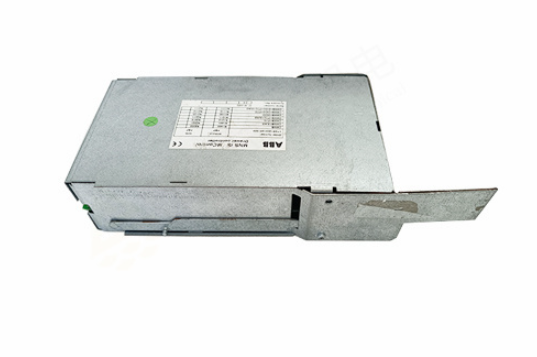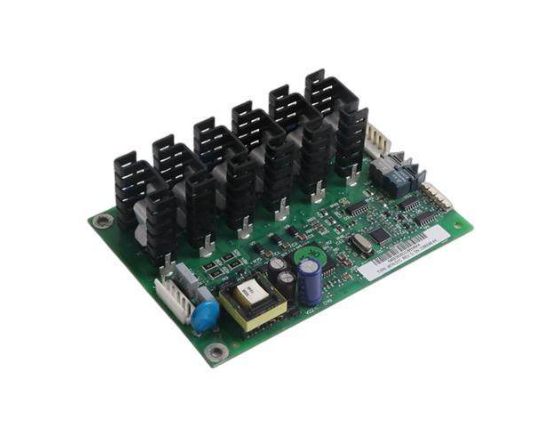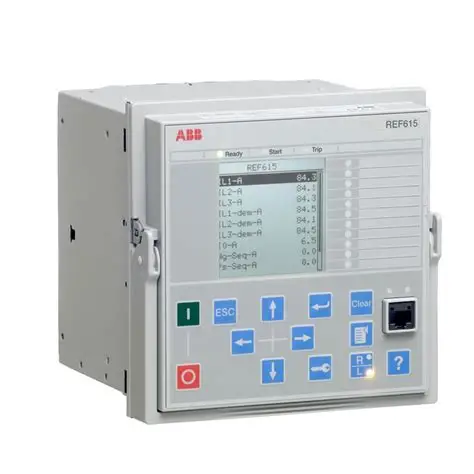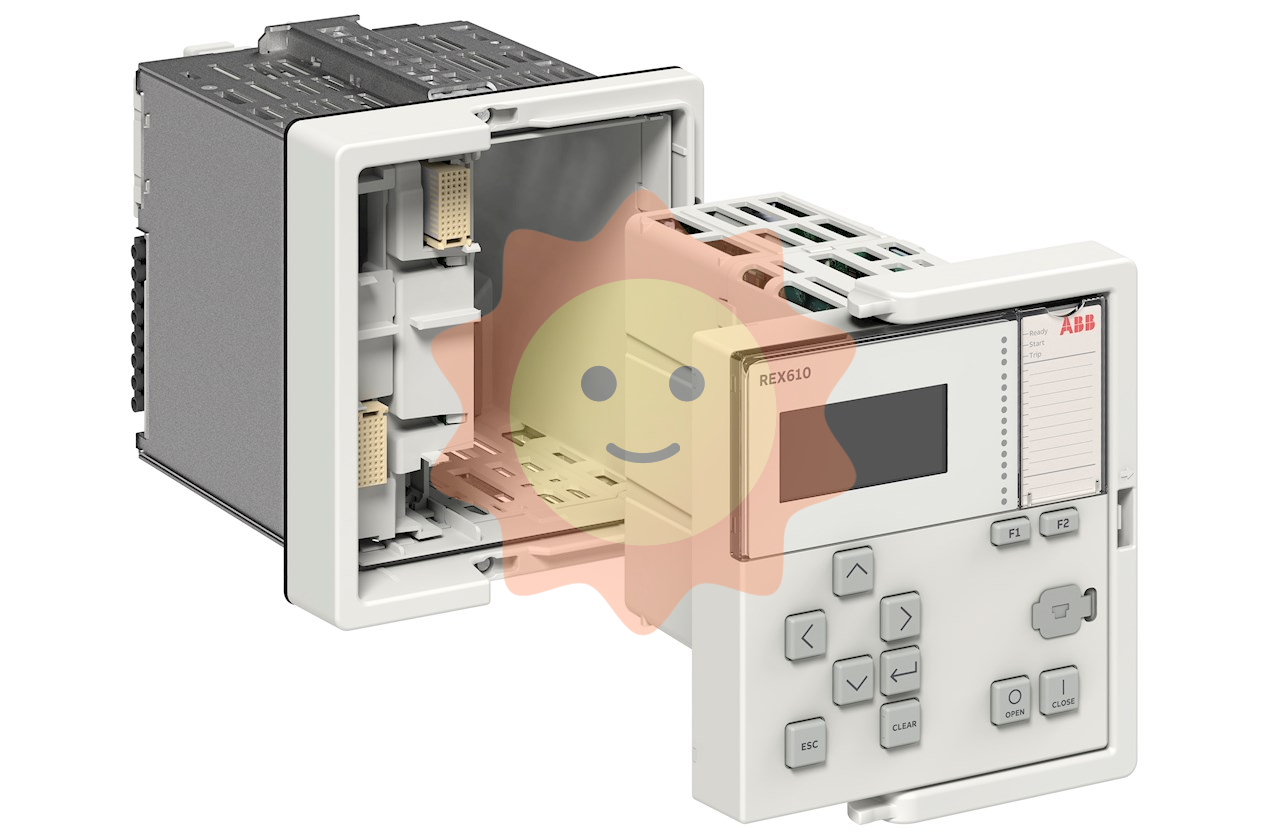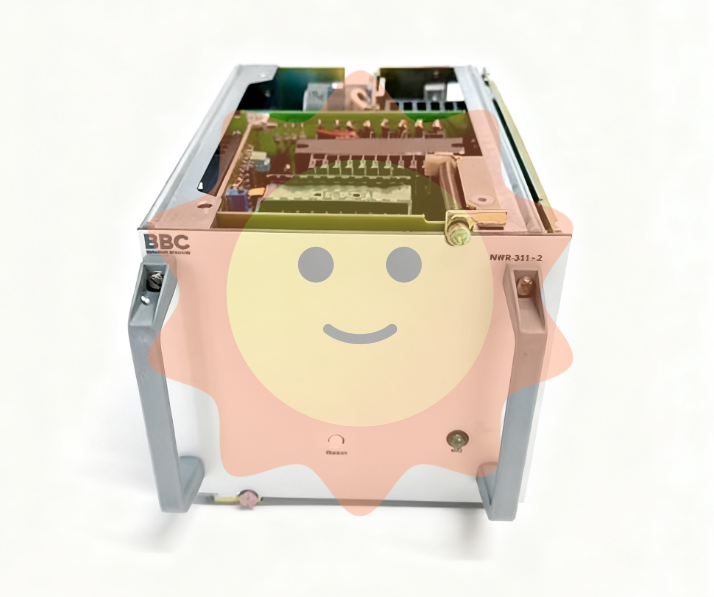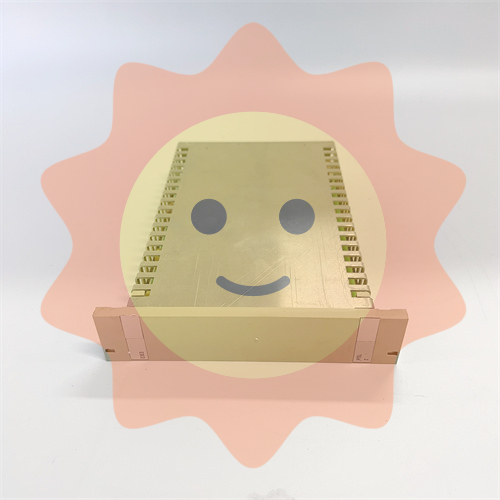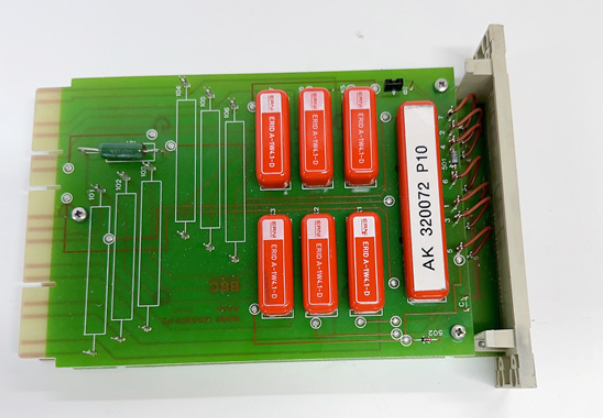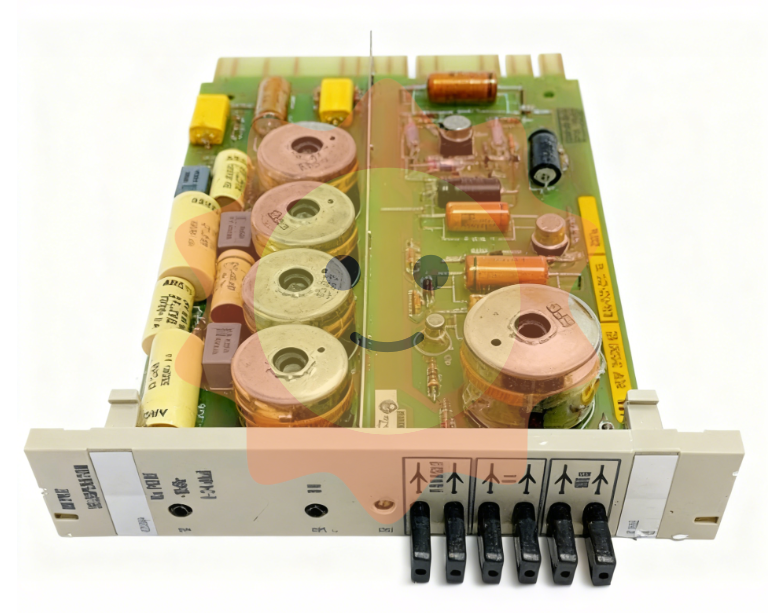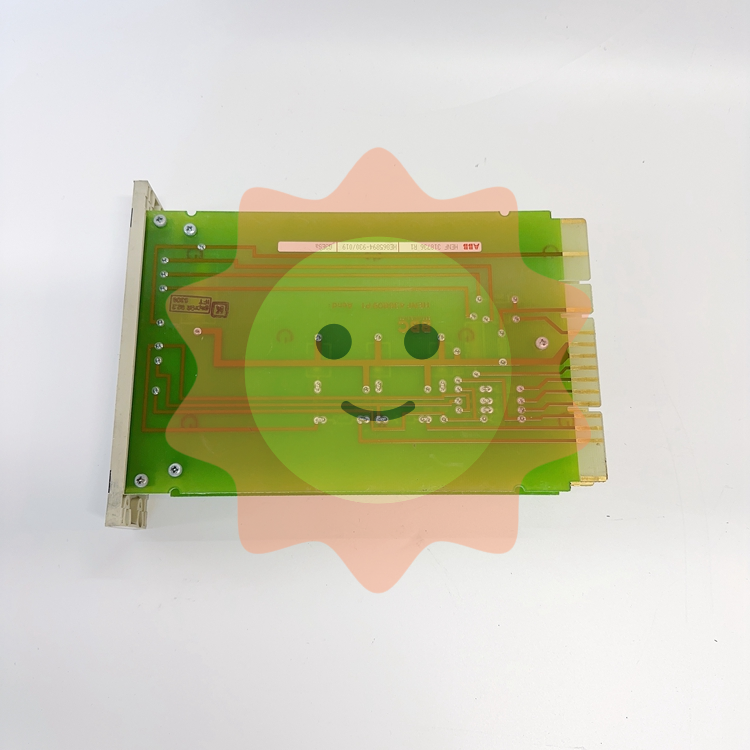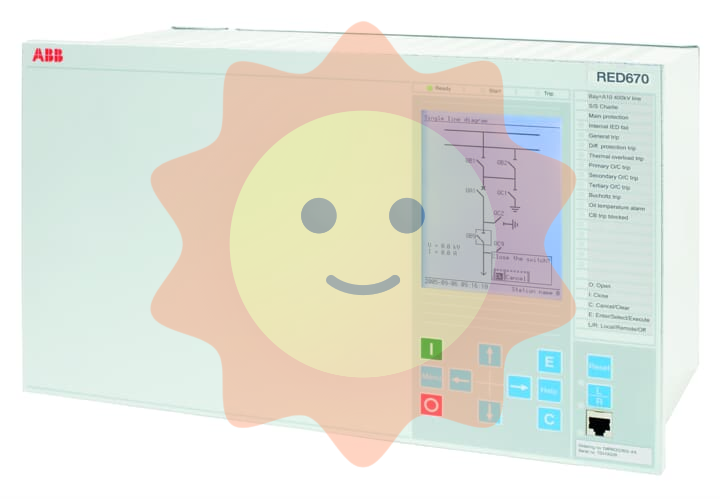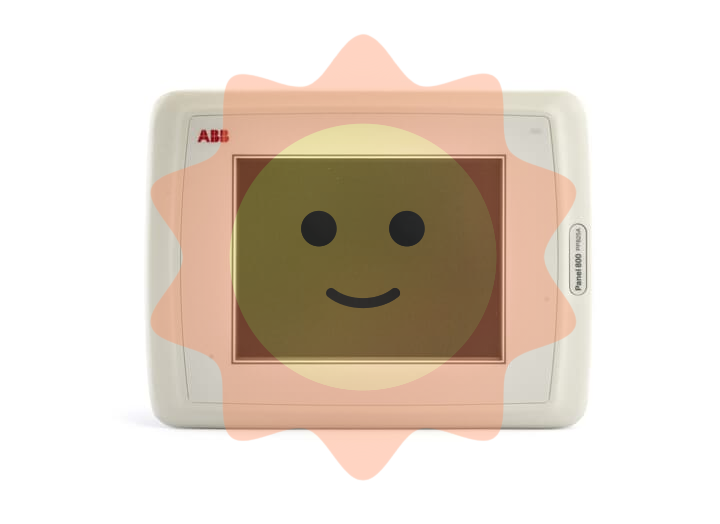Yokogawa WTB10-DO Series Dissolved Oxygen Measurement System Terminal Box
Yokogawa WTB10-DO Series Dissolved Oxygen Measurement System Terminal Box
Product basic information and positioning
1. Core functions and application scenarios
Product positioning: The WTB10-DO series terminal box is a supporting equipment for dissolved oxygen measurement systems, used for signal conversion when dissolved oxygen sensors and converters (such as FLXA402, FLXA202, FLXA21) are installed separately. It supports outdoor installation (in accordance with JIS C0920 rainproof structure standard).
System association: It needs to be used in conjunction with specific models of dissolved oxygen sensors (such as DO30G), converters, and installation brackets (such as PH8HG, PB350G, DOX8HS) from Yokogawa. Different models of terminal boxes correspond to different converters. The specific association manual is shown in the table below:
Associated device model, device name, corresponding manual number
FLXA402 4-wire converter IM 12A01F05-01eN
FLXA202, FLXA21 2-wire liquid analyzer IM 12A01A02-01E
DO30G dissolved oxygen sensor IM 12J5B3-01E
PH8HG guide bracket IM 12B7M2-01E
PB350G floating bracket IM 19H1E1-01E
DOX8HS diving bracket IM 19H1D2-01E
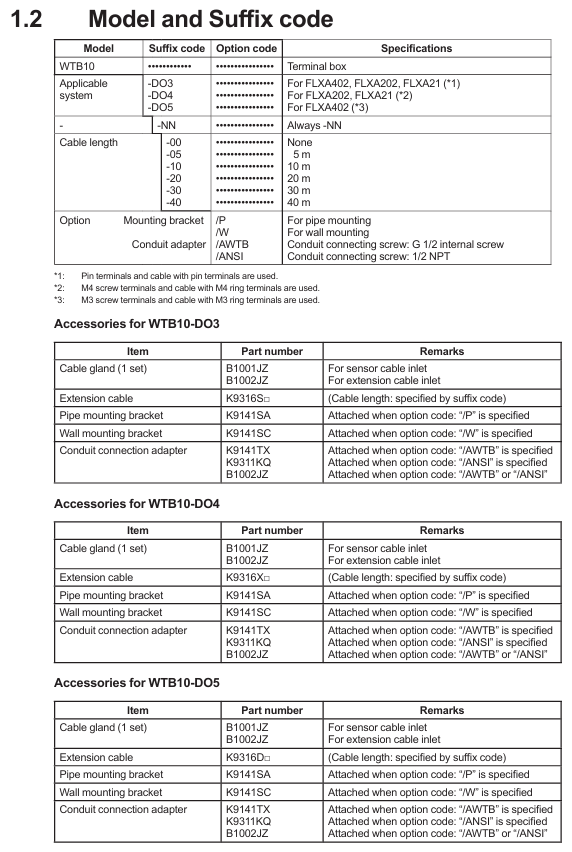
Product specifications and model description
1. Core specification parameters
Structural type: Outdoor type, JIS C0920 rainproof structure
Shell material: Glass fiber reinforced polycarbonate resin
Shell color gray green (Munsell color card 2.5 GY 5.0/1.0 or equivalent color)
Installation methods: bracket installation (no additional bracket required), pipeline installation (requires/P option bracket), wall installation (requires/W option bracket)
Weight: Terminal box body 0.5kg; Pipe installation bracket about 0.7kg; Wall installation bracket about 0.3kg
Working temperature -10~50 ℃
Cable entrance sensor cable: diameter 13mm, equipped with JIS A8 grade cable sealing sleeve (suitable for cable outer diameter 5.5-7mm); Special extension cable: diameter 21mm, equipped with JIS A15 grade cable sealing sleeve (suitable for cable outer diameter 9-12mm)
The length of the dedicated extension cable can be selected from 5m, 10m, 20m, 30m, and 40m, and the end has been pre treated; When installing/AWTB (G1/2 internal thread) or/ANSI (1/2 NPT) conduit adapters, a sealing sleeve and adapter will be included
2. Model and suffix code rules
Model structure: WTB10- [Applicable system code] - [Fixed suffix] - [Cable length code]+[Option code], the meanings of each part are as follows:
Meaning of Component Code Examples
Applicable System - DO3 compatible with FLXA402, FLXA202, FLXA21 (pin terminal, cable with pin terminal)
-DO4 compatible with FLXA202, FLXA21 (M4 threaded terminal, with M4 ring terminal cable)
-DO5 compatible with FLXA402 (M3 threaded terminal, with M3 ring terminal cable)
Fixed suffix - NN is used for all models
Cable length -00 without extension cable
-05/-10/-20/-30/-40 Extension cable length 5m/10m/20m/30m/40m
Option code/P includes pipeline installation bracket
/W includes wall installation bracket
/AWTB includes G1/2 internal thread conduit adapter
/ANSI includes 1/2 NPT conduit adapter
Accessories List: Different models of terminal boxes come with different standard accessories. Taking WTB10-DO3 as an example, the standard accessories include sensor cable sealing sleeve (B1001JZ), extension cable sealing sleeve (B1002JZ), and corresponding length extension cable (K9316S □ series). Corresponding brackets are included when installing/P or/W, and conduit adapters are included when installing/AWTB or/ANSI.
Installation process and requirements
1. Preparation before installation
Installation environment:
Outdoor rainproof, sensors should be installed as close as possible to the terminal box;
Avoid high humidity and corrosive gas environments (to prevent contact failures caused by cable breakage, poor insulation, or corrosion);
The terminal box cover is equipped with a silicone desiccant (about 30g), and its moisture absorption status needs to be checked regularly.
Installation tools and accessories: Prepare M5 screws (bracket installation, length=bracket thickness+5mm), M8 screws (wall installation, 3 pieces), U-bolts (pipeline installation, suitable for pipes with an outer diameter of 60.5mm), as well as standard accessories such as cable glands and extension cables according to the installation method.
2. Detailed explanation of installation method
(1) Bracket installation
Drill holes on the bracket according to the installation hole size of the terminal box (4 holes with a diameter of 5.5mm, hole spacing of 75 ± 0.2mm × 70 ± 0.2mm);
Fix the terminal box on the bracket with 4 M5 screws, and the screw depth should cover the thickness of the bracket before penetrating 5mm to ensure firmness.
(2) Pipeline installation (requires/P option support)
Fix the pipeline installation bracket (K9141SA) onto a sturdy pipeline with an outer diameter of 60.5mm (nominal 50A) using U-bolts, washers, and nuts;
Fix the terminal box on the bracket with 4 M5 screws, which can be installed vertically or horizontally.
(3) Wall installation (requires/W option bracket)
Drill holes on the wall according to the size (3 M8 screw holes, with a hole spacing that meets the positioning requirements of the terminal box center);
Fix the wall mounting bracket (K9141SC) to the wall with 3 M8 screws, and then secure the terminal box to the bracket with 4 M5 screws.
3. Cable entrance opening
The cable entrance at the bottom of the terminal box is a pre designed groove (not opened), which needs to be opened with a tool before wiring: align the tip of a cross screwdriver or other tool with the center of the groove, lightly tap the tool head with a hammer, and break the entrance hole along the groove (the sensor cable entrance and the extension cable entrance need to be opened separately).

Wiring operation specifications
1. Sensor cable connection
Dismantling the terminal box cover: Loosen the 2 screws on the front panel and remove the cover;
Installation of cable sealing sleeve: Remove the nut of JIS A8 grade cable sealing sleeve (B1001JZ) and assemble it to the sensor cable inlet in the order of "nut → gasket → main body → cap", ensuring that the sealing sleeve is in contact with the box body;
Cable insertion: Remove the cap, clamping claw, and rubber gasket from the sealing sleeve, place it on the sensor cable, and insert the front end of the cable into the terminal box;
Wiring: Connect the sensor cable core wires according to the terminal numbers (refer to the correspondence between "core wire color terminal number": brown -16, white -12, black -11, green -14, yellow -15, red -13), ensuring correct and secure wiring;
Sealing fixation: Install the rubber gasket and clamping claw back into the sealing sleeve, tighten the cap to prevent water ingress, and be careful not to overtighten and damage the cable.
2. Extend cable connection (terminal box converter)
Preparation work: The two ends of the extension cable have been pre treated (with no directional difference). If conduit protection is required, the DIN Pg13.5 sealing sleeve at the inlet of the converter sensor cable needs to be replaced with a JIS A15 level sealing sleeve (standard);
Install sealing sleeve/adapter:
No conduit: Install the JIS A15 grade sealing sleeve (B1002JZ) onto the extension cable in the order of "cap → clamping claw → rubber gasket → main body → gasket → nut", and fix the nut after the cable enters the terminal box;
With conduit: Replace the cap of the sealing sleeve with the optional/AWTB (G1/2) or/ANSI (1/2 NPT) adapter, tighten the adapter, and connect the conduit union;
Wiring: Connect the extension cable core wires according to the terminal numbers to ensure consistency with the terminal correspondence of the sensor cable;
Cover the box: After checking the wiring is correct, install the front panel cover back into the terminal box and tighten the screws to ensure sealing.
3. Wiring diagram
WTB10-DO3/- DO4 terminal box: The sensor cable and extension cable are connected to terminals 11 (T1, black), 12 (T2, white), 13 (IE, red), 14 (S, green), 15 (RE, yellow), 16 (SE, brown). The converter (FLXA402/FLXA202/FLXA21) receives signals through the extension cable;
WTB10-DO5 terminal box: only compatible with FLXA402 converter, wiring logic is consistent with - DO3/- DO4, please note that the terminal thread specification is M3 (- DO3 is pin type, - DO4 is M4).

Inspection and maintenance
1. Regular inspection (recommended once a year or every two years, with early inspection in case of abnormalities)
**Moisture inspection * *: Remove the terminal box cover and check if the interior is damp. If it is damp, use a hair dryer to dry it; Several desiccants (silica gel) are saturated with moisture, replace with spare desiccants (30g/part, part number K9020XR);
Corrosion inspection: Check whether the terminals and wires have corroded due to the invasion of corrosive gases. If there is a risk of poor contact or wire breakage, the corroded parts need to be replaced; When replacing the core wire crimping terminal, it is necessary to keep the wiring number label (ribbon) to avoid wiring errors.
2. Maintain parts list
The commonly used maintenance parts for terminal boxes include seals, fasteners, desiccants, etc. Different models correspond to slightly different part numbers. Taking WTB10-DO3 as an example:
Part name, part number, quantity, and purpose
O-ring G9303NB 2 sealing box gap
Desiccant (30g) K9020XR 1 absorbs moisture inside the box
Panel screws (M3 × 4) Y9304LB 2 fix the front panel
Install screws (M5 × 8) Y9508JU 4 to fix the terminal box and bracket
Cable sealing sleeve (JIS A8) B1001JZ 1 sensor cable sealing
Cable sealing sleeve (JIS A15) B1002JZ 1 extension cable sealing
Key precautions
Installation sealing: All cable entrances and box covers must be sealed to prevent rainwater and moisture from entering; When adapting the conduit, the flexible joint should be tightened to avoid cable protection failure;
Wiring specifications: strictly follow the corresponding wiring of "core wire color terminal number", incorrect wiring may cause measurement abnormalities or equipment damage; The length of the extended cable must be consistent with the selection and cannot be cut or spliced arbitrarily;
Environmental protection: Although it is an outdoor type, it is still necessary to avoid long-term exposure to strong corrosion and high humidity environments, and regularly check the condition of desiccants and seals;
Parts replacement: Only spare parts certified by Yokogawa (such as sealing sleeves, brackets, desiccants) can be used. Non certified parts may affect equipment performance and safety.
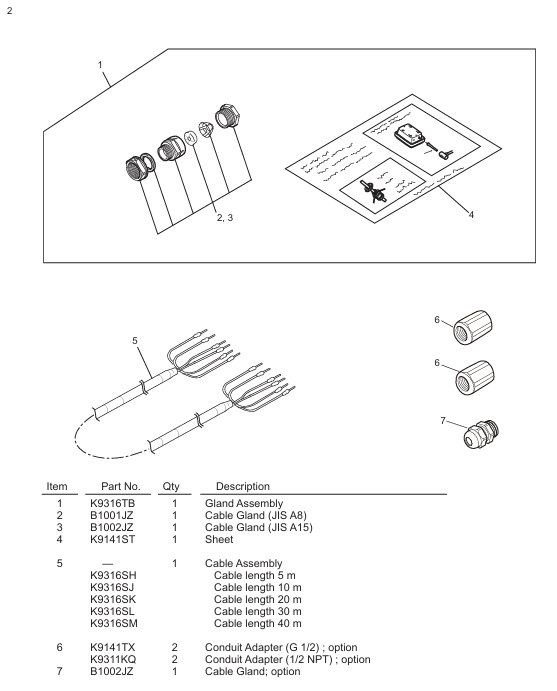
- EMERSON
- Honeywell
- CTI
- Rolls-Royce
- General Electric
- Woodward
- Yaskawa
- xYCOM
- Motorola
- Siemens
- Rockwell
- ABB
- B&R
- HIMA
- Construction site
- electricity
- Automobile market
- PLC
- DCS
- Motor drivers
- VSD
- Implications
- cement
- CO2
- CEM
- methane
- Artificial intelligence
- Titanic
- Solar energy
- Hydrogen fuel cell
- Hydrogen and fuel cells
- Hydrogen and oxygen fuel cells
- tyre
- Chemical fiber
- dynamo
- corpuscle
- Pulp and paper
- printing
- fossil
- FANUC
- Food and beverage
- Life science
- Sewage treatment
- Personal care
- electricity
- boats
- infrastructure
- Automobile industry
- metallurgy
- Nuclear power generation
- Geothermal power generation
- Water and wastewater
- Infrastructure construction
- Mine hazard
- steel
- papermaking
- Natural gas industry
- Infrastructure construction
- Power and energy
- Rubber and plastic
- Renewable energy
- pharmacy
- mining
- Plastic industry
- Schneider
- Kongsberg
- NI
- Wind energy
- International petroleum
- International new energy network
- gas
- WATLOW
- ProSoft
- SEW
- wind
- ADVANCED
- Reliance
- YOKOGAWA
- TRICONEX
- FOXBORO
- METSO
- MAN
- Advantest
- ADVANCED
- ALSTOM
- Control Wave
- AB
- AMAT
- STUDER
- KONGSBERG
- MOTOROLA
- DANAHER MOTION
- Bently
- Galil
- EATON
- MOLEX
- Triconex
- DEIF
- B&W
- ZYGO
- Aerotech
- DANFOSS
- KOLLMORGEN
- Beijer
- Endress+Hauser
- MOOG
- KB
- Moxa
- Rexroth


Email:wang@kongjiangauto.com

